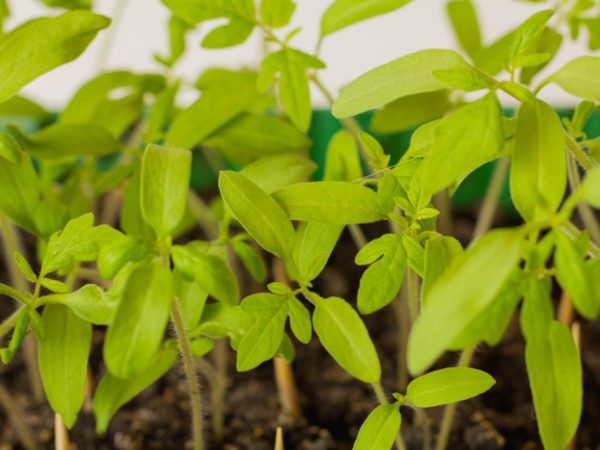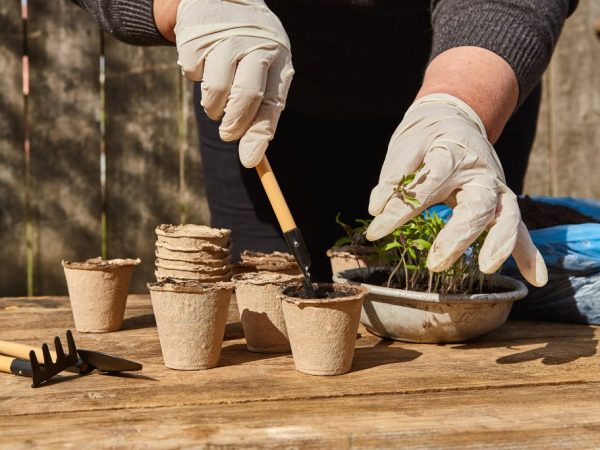Causes of death of tomato seedlings
It is not always easy to understand why tomato seedlings die. Often strong and healthy-looking plants begin to wither and dry out. If the reason for this is not found in time, then you can lose all plantings and crops.

Causes of death of tomato seedlings
Watering
Seedlings may die due to infrequent watering.
The plant first withers, and then the leaves and ends of the shoots begin to dry. Water the tomatoes generously, but not very often. It is better to wait until the surface layer of the soil is completely dry.
If there are no drainage holes in the container through which excess water would go, then the soil is compacted and a stagnant liquid forms. In this case, the roots of the seedlings may rot. To avoid this, sand and pieces of charcoal are added to the soil as drainage. They prevent stagnation of water and rotting of the underground parts of the seedling.
Tatiana Orlova (Candidate of Agricultural Sciences):
Often amateur gardeners grow seedlings on the windowsill. In this case, the temperature in the room can be at the optimal level, but it is not taken into account that the window sill is cold. This leads to the fact that the roots of the seedlings stop working, absorb moisture from the soil and evaporate it through the leaves. Stagnant water in the growing tank causes root rot.
Temperature and lighting
Temperature is of great importance for the growth of tomatoes.
At temperatures above 35 ° C, it dries up and dies, and below 15 °, it stops growing. The optimum temperature for healthy growth is 18-22 ° C.
When growing tomatoes on a windowsill, you need to make sure that there are no drafts. Cold air can kill seedlings. When the air vents are open, containers with tomato seedlings must be removed. Seedlings should receive a large amount of light, if there is not enough light, the seedlings stretch out strongly, after which they will fall down or break under their weight.
To avoid this, additional illumination is organized. For this, phytolamps or conventional ultraviolet lamps are used. At night, the backlight is removed, because at night, the leaves of the sunlight received during the day are processed into carbohydrates. It is necessary to carefully adjust the power of the lamps so that the leaves do not get burned.
Density of plantings
Seedlings may die due to the density of seedlings. It is necessary to observe the distance between the rows of 5 cm, and between the plants 2-3 cm. This is done so that the sprouts do not shade each other.
Also, dense planting may lack moisture and nutrients. The roots are strongly intertwined, which makes it difficult to further pick tomatoes and transplant them into separate containers or open ground.
Top dressing
Top dressing is a very important part of growing tomatoes. It provides an impetus for fast and healthy seedling growth. Therefore, with a lack of nutrients, plants begin to wither, turn yellow and die.
An excess of mineral fertilizers in the soil not only negatively affects the quality of the grown fruits, but can also burn the delicate roots of plants.If this happens, then you need to urgently transplant the plants into a clean substrate.
Tatiana Orlova (Candidate of Agricultural Sciences):
A good substrate for growing seedlings is peat-based soil. But not all peat is suitable, but only horse peat. It is already well weathered, decomposed, and has lost a significant part of its acidity. Bottom peat is more acidic. Using it in soil preparation, at best, leads to a delay in growth and development, in the worst case, to the rapid death of seedlings.
Pick errors

You need to dive seedlings correctly
Another reason for the disease and death of seedlings may be incorrect picking of the seedling. They dive when 2-3 leaves appear. Be sure to pinch a small part of the central root. This provokes an intensive growth of the lateral roots.
The main picking mistakes that cause the death of tomatoes are as follows:
- Plucking off too much of the rhizome. The young plant loses its ability to feed normally and dies from this.
- Damage to the rest of the roots. If the bark system is quite developed at the time of the pick, then it is necessary to remove the plants from the ground using the transshipment method. Otherwise, irreparable damage will be done to the roots.
- Using untreated dive pliers or scissors. Various pathogens and fungal spores can enter the tomato through the cut. To avoid this, all tools are pretreated, and the soil is spilled with a solution of potassium permanganate.
The dived seedlings are watered abundantly and placed in a warm, slightly shaded place. For the first few days, young plants may look slightly drooping. This is not a sign of illness.
Effects
The most dangerous disease is the black leg - it provokes drying out of the stem tissue. It looks like a piece of thin black thread. Everything above this jumper dries and dies. First, the castings are bent, and after that the growth point dies off completely.
The disease disrupts the circulation of juices in the seedlings. It is advisable to treat plants until the surface of the stem has just begun to darken slightly, but has not begun to thin out. The rest of the tomatoes need to be removed from the box, because there will be no sense from them. They are carriers of a fungal infection, so they need to be destroyed so that the entire planting does not die.
Tatiana Orlova (Candidate of Agricultural Sciences):
The source of an infection called rhizoctonia, or black leg, is soil. Therefore, a mandatory method when growing your seedlings is disinfection of the soil, including the store one. Thickened crops, excessive soil moisture and poor ventilation contribute to the development of the disease. At the first signs of illness in a box with seedlings (1-2 "fallen" seedlings), watering is sharply reduced, the soil surface is sprinkled (preferably especially carefully at the plant stems) with ash or crushed tablets of activated carbon.
Prophylaxis
To understand why tomato seedlings die, you need to carefully look at the conditions of its cultivation in order to prevent this in time. Preventive measures:
- disinfection of the soil before planting by calcining or processing with chemicals;
- soaking seeds in a strong solution of potassium permanganate before immersing them in the soil;
- timely feeding and watering;
- selection of proven seed producers.
Conclusion
If a young tomato seedling dies, but the reasons are still not clear, then you need to get rid not only of the seedlings themselves, but of the soil in which they grew. The reason may be the spread of some kind of fungal disease.
Poor quality planting material is one of the many reasons for the death of seedlings when growing them at home or in a greenhouse. You do not need to buy planting material from your hands, but choose only trusted manufacturers.



